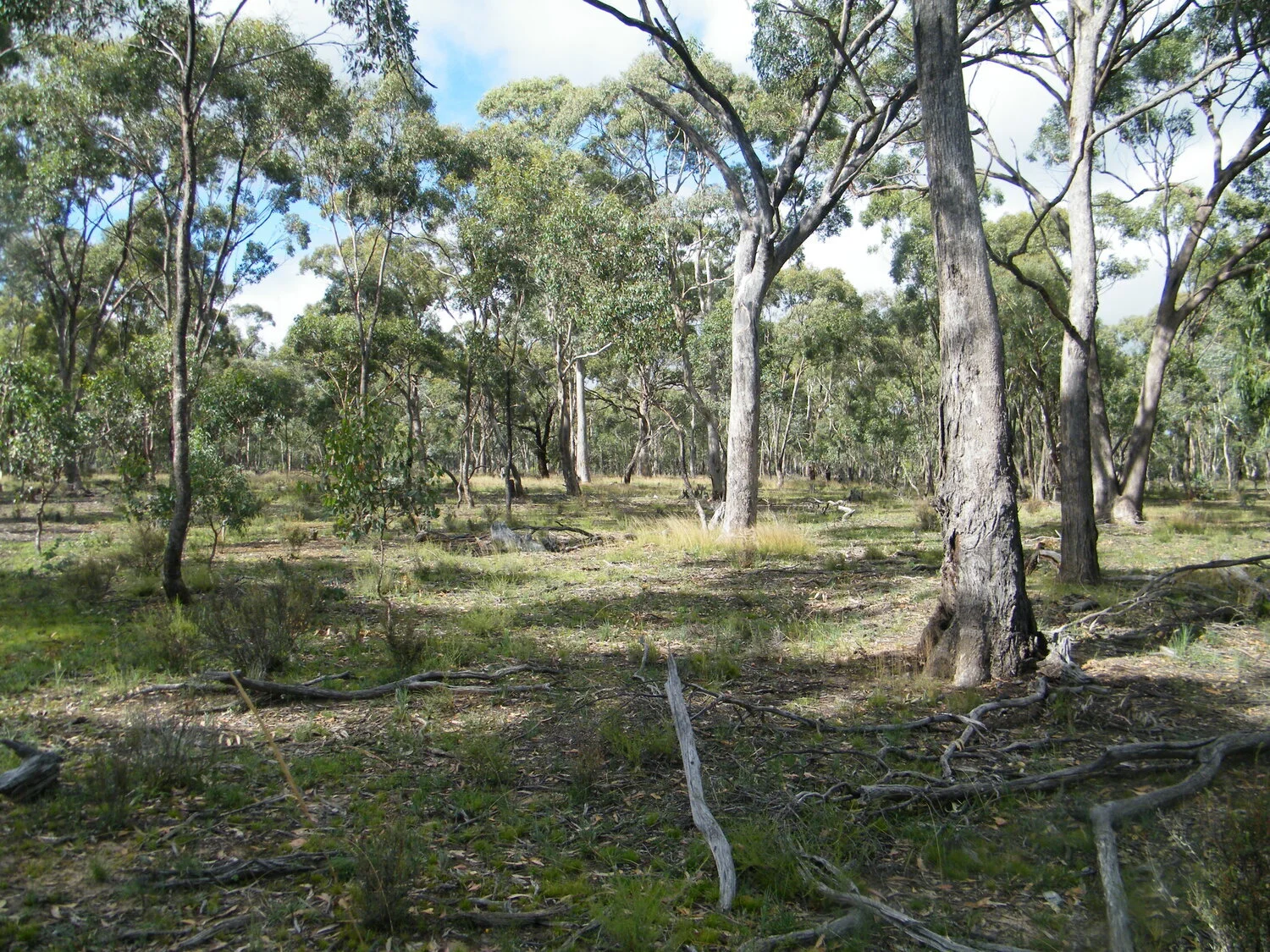Heathcote Local 2 Landscape Action Plan and Prospectus: A Plan for community-lead landscape-scale ecological restoration.
Read MoreThe larger reserves are core areas for the conservation of many species. Source populations of species in the larger reserves provide the individuals that disperse across the landscape and colonise other patches. Biolinks provide the networks of corridors and stepping stones that enable this dispersal from and between the larger reserves.
Read MoreWe are now recognising the values of nature in urban areas for human well-being, the survival of species and the ecological health of our urban environment. Healthy natural ecosystems can cool the air, filter pollutants, retain water and stormwater runoff, control pests, pollinate our plants - and help reduce carbon emissions and moderate the impacts of climate change.
Read MorePaddock trees have a unique role in biodiversity conservation. They provide habitat for a wide range of species, particularly those that need hollows (including many bats and birds), and those that need the abundant food resources provided by large trees. Even dead trees – standing starkly in paddocks – provide a home for many animals. And, although they often stand alone, they can provide essential stepping stones for the movement of many different species between bushland patches.
Read MoreAgriculture can be sustainable if it can meet society’s current food and textile needs without compromising the ability of future generations to meet their own needs. Grazing management is a critical part of sustainable agriculture that aims to provide food for animals throughout the year by protecting perennial grasses from overgrazing and soils from wind and water erosion.
Read MoreProductive farming and biodiversity conservation can co-exist to the mutual benefit of both. There is a growing body of evidence on the long-term benefits of retaining trees, protecting corridors of bushland and taking care of the ground cover. This biodiversity can moderate climate at a local and regional scale, protect soils and water supplies, increase productivity with minimal inputs and costs, and reduce the use of chemicals for soil fertility and pest control.
Read MoreAs more and more people create wildlife habitat and healthy ecosystems - in our own personal spaces and in our many community parks and gardens (see Urban Parks) – each little patch will become a part of a much larger matrix of natural ecosystems across our urban areas.
Read MoreAll bush blocks have conservation values. The old trees and understorey and ground layers provide habitat for a diversity of animals. Larger patches – from 10ha – provide habitat for many more species. And bush blocks can add to larger habitat patches on adjoining land and help to buffer areas of high quality or threatened vegetation.
Read MoreConnecting the landscape is one way to allow genes to move, but many species are less mobile or have long generation times so gene flow may be too slow to provide the genetic diversity needed for climate adaptation. It may require the process to be accelerated through more active methods like Climate-Future Plots, that use important genetic differences to build in pre-adaption to climate change.
Read MoreIn the extensively cleared and modified grasslands and woodlands of central Victoria, road reserves may contain virtually all of the remaining native vegetation, and the oldest and largest trees with the tree hollows needed for a wide range of wildlife.
Read MoreRegent Honeyeaters are endangered due to loss of woodland habitat, but a combination of habitat restoration, captive releases, monitoring and research, and community involvement is working towards recovery of this and other woodland species.
Read MoreThe afternoon of the symposium was spent looking at various methods being tried to bolster the quality of grasslands in degraded sites at the Euroa Arboretum and farmland at Miepoll.
Read MoreNative digging mammals in Australia are now rare or extinct and their important ecological functions have been largely lost, but some restoration is possible with re-introductions, sufficient habitat cover, rabbit control and other approaches.
Read MoreAboriginal burning explains the historical distribution of native grasslands, and burning rather than grazing may be an efficient long-term way to restore the quality of these grasslands.
Read MoreWith insects declining around the world, studies on the effects of habitat loss and fragmentation in agricultural landscapes provide an explanation for the decline and suggest implications for restoration.
Read MoreGrassy woodlands and woodland species are under threat but there are many ways we can transform our grassy woodlands to states that are richer and more resilient to change.
Read MoreThe behaviour of nectar-eating flying foxes and birds is telling us an important story and we need to listen and respond to their message. Dr Eby says we must protect, restore and reconnect habitat over vast distances – scaling- up our local efforts in a coordinated and strategic fashion.
Read MoreOur 2040 vision - The heath of Central Victoria’s natural environment is being restored and its species are no longer in decline.
Read MoreRead the key issues people voiced around - River frontage restoration - Leaky landscapes - Managing spring soaks, bogs and wetlands - Environmental and cultural water
Read MoreJim’s summary brought together four themes from the Symposium. Connectivity has many dimensions in aquatic systems: along streams and across floodplains, between surface and groundwater, across time and across cultures. Resilience and resistance are features of the biological systems and the people who care for them. Solutions are available and local solutions all count in the larger landscape. And finally, we have choices about the future of our landscapes – but need to think big.
Read More



















